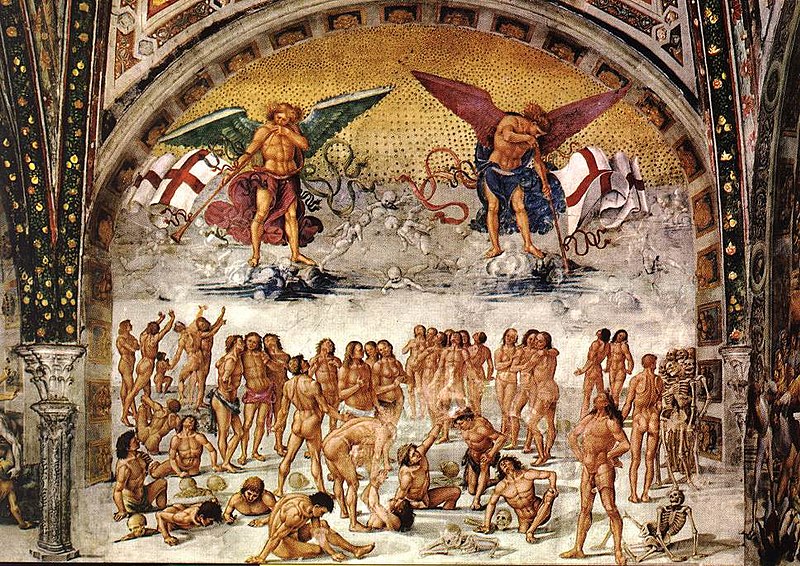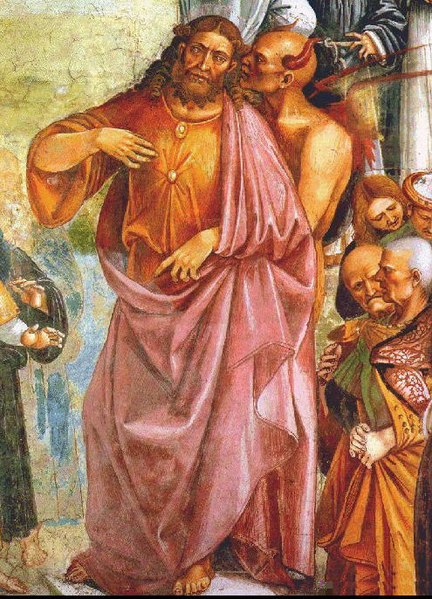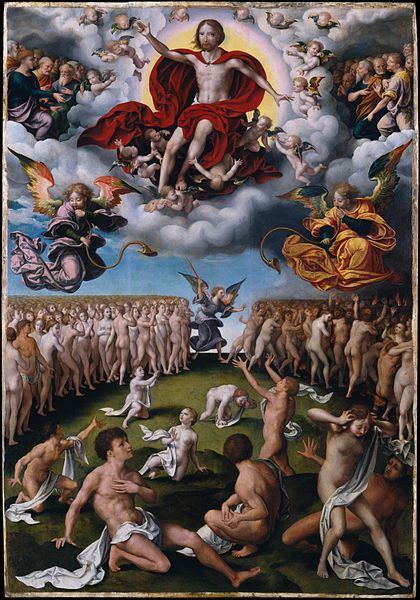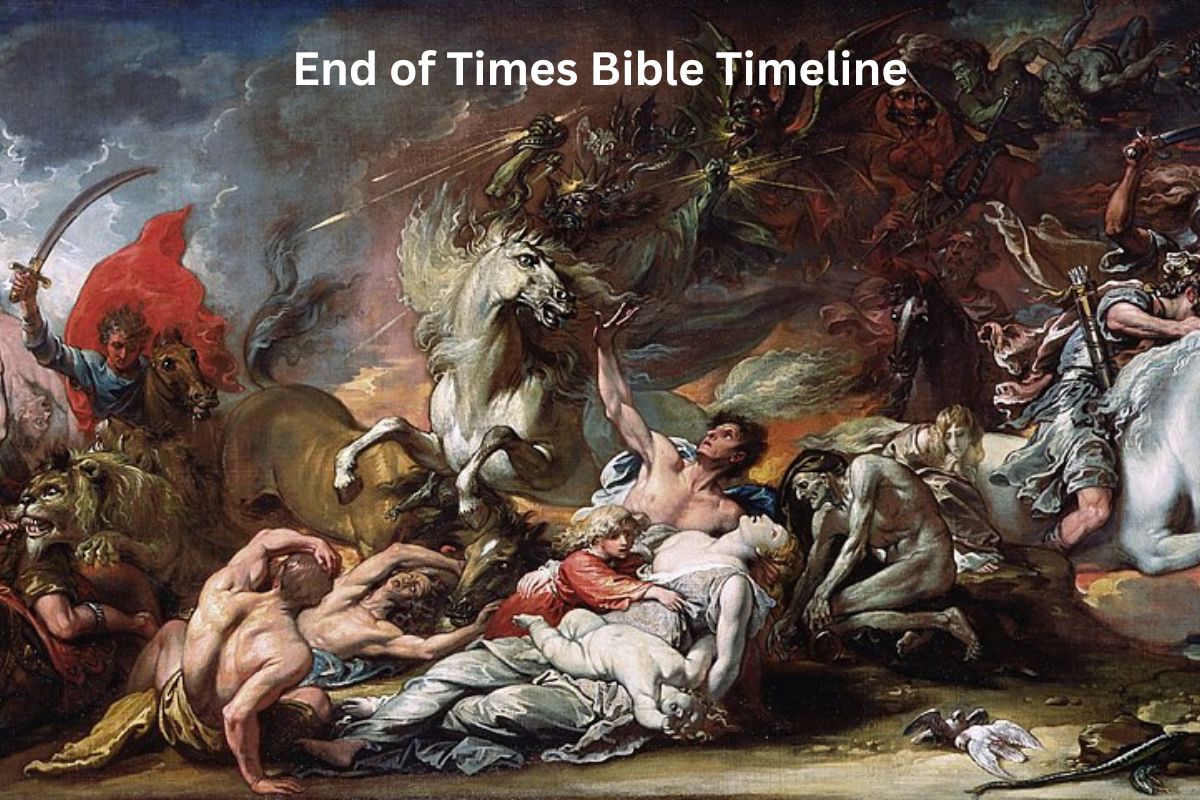The “End of Times,” often referred to as “Biblical Eschatology,” is a theological framework within Christianity that outlines a series of prophesied events believed to occur in the future, ultimately leading to the culmination of human history and the establishment of God’s eternal kingdom.
This timeline is primarily derived from biblical texts, particularly the Book of Revelation, as well as passages from the Old and New Testaments.
It offers a roadmap of key events and their anticipated sequence, although interpretations may vary among Christian denominations.
| Event | Description | Scriptural References |
|---|---|---|
| Tribulation | A period of great suffering and turmoil on Earth, often lasting seven years. | Various interpretations, including Daniel 9:27 and Revelation 7:14. |
| Rapture | Believers are taken up to heaven to be with Jesus Christ. | 1 Thessalonians 4:17. |
| Antichrist | An Antichrist figure emerges, opposing Christ and deceiving many. | Various references, including 1 John 2:18 and Revelation 13. |
| Great Tribulation | Greater suffering and persecution during the latter half of the tribulation. | Various references, including Matthew 24:21. |
| Second Coming of Christ | Jesus returns to Earth in power and glory. | Revelation 19. |
| Battle of Armageddon | A final battle where the forces of evil are defeated. | Revelation 16:16. |
| Millennium | A thousand-year period of peace and righteousness on Earth. | Revelation 20. |
| Final Judgment | All people are judged by God. | Various references, including Revelation 20:11-15. |
| New Heaven and New Earth | A new creation where believers dwell with God for eternity. | Revelation 21-22. |
Timeline of the End of Days in the Bible
Tribulation:
Description: The concept of the Tribulation is rooted in various passages in both the Old and New Testaments of the Bible. It is a period of intense suffering, turmoil, and tribulations that is expected to occur before the Second Coming of Christ.

Also Read: Timeline of Christian Denominations
The duration of the Tribulation is often debated, with some interpretations suggesting it will last for seven years, while others hold differing views.
Scriptural References:
Daniel 9:27: This verse mentions a covenant made with many for one week (interpreted by some as a seven-year period) and the breaking of that covenant.
Revelation 7:14: This verse refers to a great multitude coming out of the “great tribulation” who have washed their robes in the blood of the Lamb (Christ).
Rapture:
Description: The Rapture is a belief that believers in Christ, both the living and the dead, will be caught up or “raptured” to meet Jesus in the air.
Also Read: Timeline of the Spread of Christianity
This event is often associated with the idea that believers will be saved from the worst of the Tribulation, and it is seen as a moment of great hope and anticipation for Christians.
Scriptural References:
1 Thessalonians 4:17: This passage mentions that the “dead in Christ” will rise first, and then those who are alive will be caught up together with them to meet the Lord in the air.
Antichrist:
Description: The Antichrist is a figure who is believed to emerge during the End Times and is often associated with deception, opposition to Christ, and a false claim of messiahship.
The term “Antichrist” is mentioned explicitly in the Bible, primarily in the letters of John, and it is often linked to the Antichrist’s role in the events leading up to the Second Coming.

Scriptural References:
1 John 2:18: John warns of “antichrists” who have come and states that the Antichrist is coming, but he is also aware of the ultimate victory of Christ.
Revelation 13: This chapter in the Book of Revelation describes the rise of a beast from the sea, often associated with the Antichrist, who is granted authority and power by the dragon (Satan) and deceives many.
Great Tribulation:
Description: The Great Tribulation is a period of unprecedented suffering and turmoil that is believed to occur during the latter part of the seven-year Tribulation period in Christian eschatology.
It is characterized by intense persecution of believers, natural disasters, and cosmic disturbances. The concept of the Great Tribulation is drawn from various passages in the Bible, particularly in the teachings of Jesus and the Book of Revelation.
Scriptural References:
Matthew 24:21: In the Olivet Discourse, Jesus warns of a time of “great tribulation” that will be worse than any previous suffering in history.
Revelation 7:14: This verse speaks of a “great tribulation” from which a multitude emerges who have washed their robes in the blood of the Lamb (Christ).
Second Coming of Christ:
Description: The Second Coming of Christ is a central event in Christian eschatology. It is the anticipated return of Jesus to Earth in power and glory.
Christians believe that Jesus will come to fulfill various roles during this event, including the establishment of His reign, the defeat of evil, and the final judgment of all people.

Scriptural References:
Revelation 19: This chapter in the Book of Revelation vividly describes the Second Coming of Christ, with Jesus portrayed as a conquering king riding a white horse and defeating the enemies of God.
Battle of Armageddon:
Description: The Battle of Armageddon is a prophesied battle often associated with the Second Coming of Christ. It is believed to be a climactic and decisive conflict where the forces of evil, led by the Antichrist, gather to oppose Christ and are ultimately defeated.
The name “Armageddon” is derived from the Hebrew name “Har Megiddo,” referring to the ancient plain of Megiddo in Israel.
Scriptural References:
Revelation 16:16: This verse mentions the gathering of the kings of the earth to a place called Armageddon, where they will face the judgment of God.
Millennium:
Description: The Millennium is a concept in Christian eschatology that refers to a thousand-year period of peace and righteousness on Earth following the Second Coming of Christ.
The belief in the Millennium is based on a specific interpretation of Revelation 20, where it mentions that Satan will be bound for a thousand years, and Christ will reign with His saints. This period is often seen as a time of restoration and fulfillment of God’s promises.
Scriptural References:
Revelation 20: This chapter describes the binding of Satan, the reign of Christ and His saints, and the first resurrection, which is associated with the beginning of the Millennium.
Final Judgment:
Description: The Final Judgment is a crucial event in Christian eschatology where all people, both the living and the dead, are brought before God to be judged.
It is believed that every individual will give an account of their deeds, and God will render a just and final verdict, determining their eternal destiny—either eternal life with God or eternal separation from Him in a state often referred to as damnation or hell.

Scriptural References:
Revelation 20:11-15: This passage describes the Great White Throne Judgment, where the books are opened, and people are judged according to their deeds. Those not found in the Book of Life are cast into the lake of fire.
New Heaven and New Earth:
Description: After the Final Judgment, it is believed that God will create a new heaven and a new earth—a renewed and perfected creation where righteousness dwells.
This concept is described in the final chapters of the Book of Revelation and represents the ultimate fulfillment of God’s plan of redemption and restoration.
Scriptural References:
Revelation 21-22: These chapters provide a detailed description of the new heaven and new earth, with a focus on the New Jerusalem, which is described as a glorious city where God’s presence resides, and there is no more sorrow, pain, or death.
